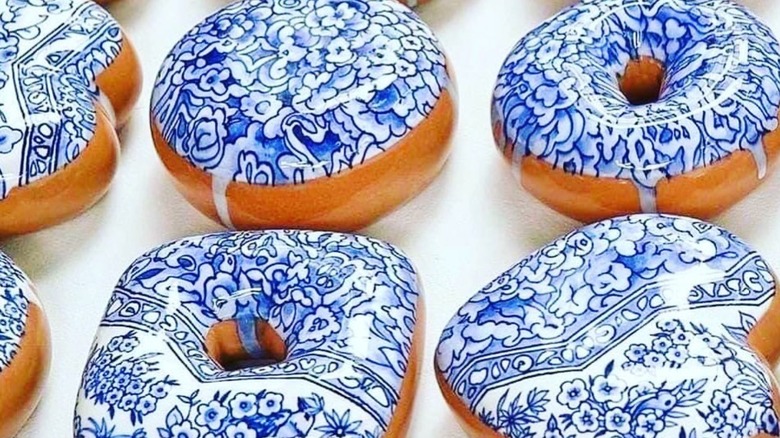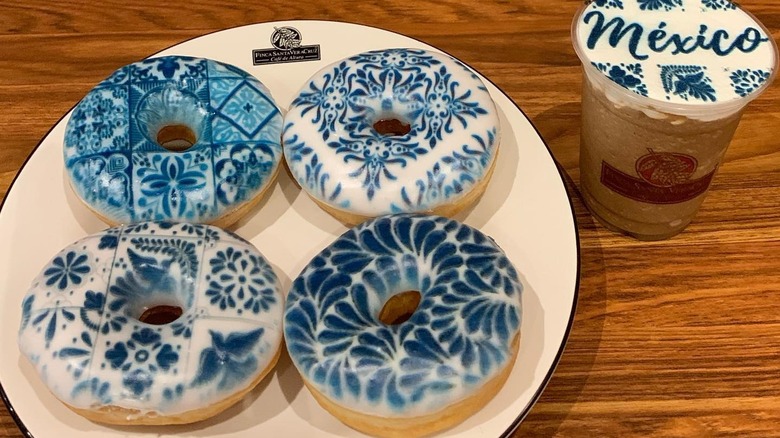The Mexican Donuts That Are (Almost) Too Pretty To Eat
Ever feel like you've eaten a brick? Not so appetizing, right? But what about a tile (a Mexican Talavera tile, to be exact)? Visitors to Mexico have long enjoyed its many artisanal traditions: The country is steeped in a vibrant and diverse architectural aesthetic and culinary history.
One of Mexico's enduring traditions, which started in the colonial period and continues to this day, is the art of Talavera tile. The pre-Colombian peoples of Mexico were already experienced in making pottery, but the Spanish brought new methods with them, including tin-glazing, which had been unknown in the Americas prior to the Conquest (per Moya Donnellan).
The tile has deep roots and the name originally referred to a type of majolica ceramic tile developed in Talavera la Reina in Spain (via Native Trails), which was then brought to Mexico in 1571 (it is believed) to decorate Puebla's Santo Domingo Church in the style to which the Spanish were accustomed. The Spanish taught their trade to workers in Puebla with great success; within a century, Mexican artists had become experts in the craft and the tile was being produced in abundance (via La Fuente). Prevalent throughout the country to this day, while production slowed significantly after 1800, there has been a recent revival and resurgence of interest in the pursuit (per Mezcal For Life). It's so important that UNESCO declared it part of Mexico's intangible cultural heritage in 2020 (via Talavera.com). But what does all this have to do with donuts?
A feast for the eyes ... and stomach
Mexico is proud of its ceramic legacy, and Puebla especially so. While many Mexican tiles feature a broad range of colors, some of the most distinctive ceramics produced in Puebla include only two colors: blue designs on a white background (per Talavera.com).
Of course, Mexico has a lot of excellent food, too. And the country is home to a number of great pastry traditions, like the ubiquitous, occasionally colorful "concha" sweet bread; various forms of mazapán (marzipan typically made with peanuts), and, yes, donuts. One Poblano bakery decided to proclaim its pastry-pottery pride in an unusually captivating way: by decorating many of its confections to resemble the region's renowned ceramics (via El Financiero and The Yucatán Times).
The owners of Cafetería Finca Santa Vera Cruz have combined one of Mexico's most beautiful ornamental traditions with their baked goods, for treats that are so beautiful you may have a hard time eating them. The artistry relies on a specialized printer to reproduce typical tile designs on the bakery's donuts, cookies, and specialty marzipan treats (per México Desconocido). But if you have a hard time eating something so beautiful, don't worry — the technology also allows them to print other images as well, and even on beverages (like the foam on your latte, per Maleta de Viajes). It might be easier to accept putting a straw in the corner of your drink and appreciating this glorious Mexican art as you sip.

